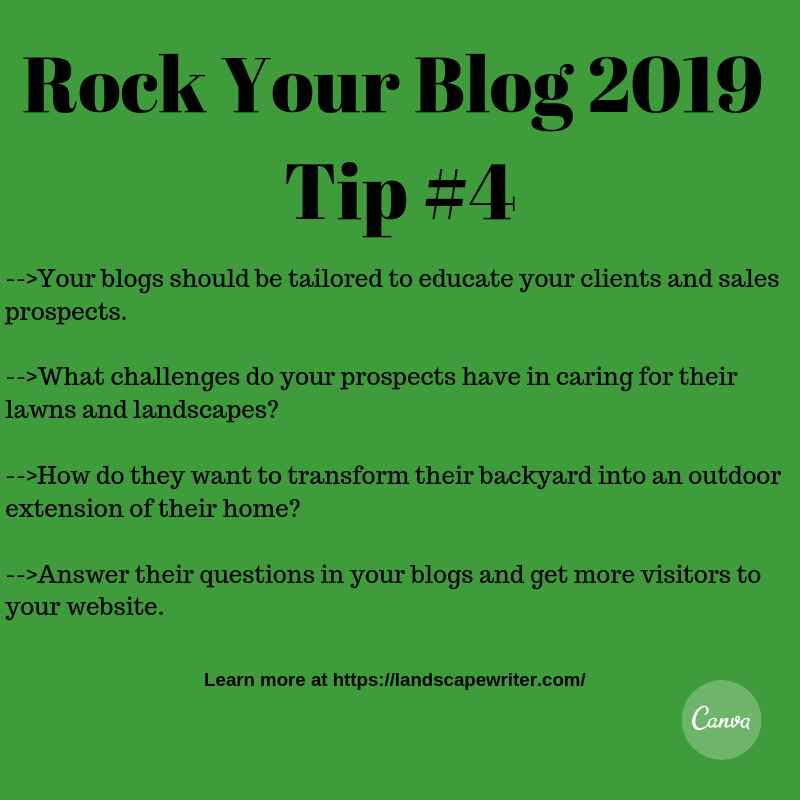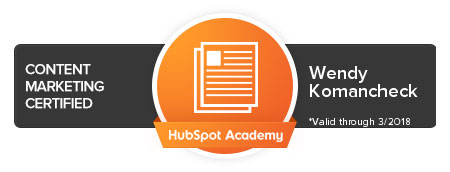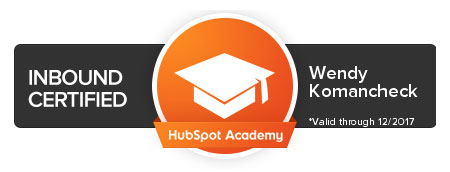
Don’t you wish you knew what topic to write about for your landscape maintenance and lawn care blog?
You may believe that you can’t come up with any good topics to share with your followers, who you hope become your customers.
Rest assured, my friend. This blog post will help you come up with the next great title for you to blog about.
How You Can Come Up with Blog Ideas
Your goal for your landscape blogs should be to educate your readers—both loyal customers and sales prospects. You don’t want a hard sell because that leads your readers to go to your competitor’s blog.
Your blog posts should answer why your sales prospects should call you for a free estimate or sign up for your lawn fertilization program. What makes you stand out from the crowd? Why should I (the sales prospect) trust you?
Here are some article ideas to introduce your lawn service or contracting company to your blog readers:
- Frequently Asked Questions (FAQs) you get from your current clients. You use each question featured on your website’s FAQ to create a blog answering that question.
- Article titles that cover the basics, such as “What is Organic Lawn Care?” “Why You Need a Certified Arborist to Care for Your Trees,” and “How Does a Landscape Contractor Manage My Outdoor Kitchen Project?”
- Seasonal Ideas such as April is National Lawn Care Month, July is Smart Irrigation Month, and Arbor Day is on the last Friday of every April.
- Solve the readers’ problems. For example, in Pennsylvania, homeowners and property managers are dealing with Spotted Lanternflies laying their eggs on trees. How do you fix that problem? Do you, as a tree care company, have the ability to address the problem and save your customers’ trees?
You can also expand on ideas such as core aeration in the spring and fall, grub prevention in mid to late summer, and winterizing a sprinkler system in late fall.
Read more: 7 Tips for Getting More Landscape Customers.
According to Neil Patel, in his article, “How to Come Up with 93 Blog Ideas in 10 Minutes,” “Top writers keep their minds filled with ideas that their readers care about.”
Homeowners and property managers come to your blog to see if you can fix their most pressing lawn care and landscaping problems.
Learn from the Best
Neil Patel is a well-known digital marketer from England; he’s also an influencer in digital marketing and SEO. Here’s how Patel strategizes his blog posts:
Know what your readers care about—it goes back to their most pressing property problems, whether that’s the Spotted Lanternfly, ticks, crabgrass, or overgrown flowerbeds.
Leave your readers feeling hopeful that they can have a beautiful, sustainable lawn, an outdoor kitchen for summer parties, and flowerbeds that attract pollinators.
Surprise your readers with fresh, well-researched content that gives them the push they need to call you for all of their property’s needs.
Survey your readers to see what topics they want you to cover in your blogs
Read more: Web developers and digital marketing agencies: What are your pain points?
Check out popular lawn care and garden design books on Amazon. Click on the “Look Inside” option to study the table of contents.
While you don’t copy the information outlined in the books, you can use the table of contents as starting points for blog topics. These topics are already reader-approved.
Popular Blog Topics for the Green Industry
Carol Tice, another seasoned business writer, shares her blog-generating ideas in a post on Entrepreneur.com. Granted, this is a general list, not one specified for the lawn care, tree care, or landscape industry. But Tice’s ideas can be a start to a brainstorming session.
Here are some of her ideas adapted for you:
- Turn positive customer testimonials into a blog post. You could make this into a case study where your customer had a specific problem, and you solved that problem for them.
- Compile a link roundup where you take links from trades and other online magazines, such as HGTV.com. I do this with my social media posts … however, I don’t put them in listicles. If I read an article that I think will benefit my followers, I post it on Buffer.
- You can do the same thing, but make it a listicle blog. It’s easy to assemble, and you can comment on each article. Don’t forget to read the articles first and make sure you put hyperlinks with each title.
- Create a video blog or a Vlog. Share your ideas for lawn care, talk about your favorite mower, or show how to create a striped lawn. You may attract DIY’ers, but you’ll also attract folks who don’t want to mow their lawns but will hire you to do the job for them.
- Infographics work well for any lawn and plant health care programs you provide. For example, hire a graphic artist to create an infographic highlighting how fertilization works.
- Share new lawn care, mowing, tree care, or landscaping trends. For example, organic lawn care is a trend that millennial homeowners are interested in. How can you capitalize on a green industry trend?
If you’re just starting out with a lawn care and landscape maintenance website, here are five blogging ideas to get your blog off to a good start: - Get to the root of the problem with plant fertilization. If your company provides a fertilization program for lawns, landscapes, flowerbeds, or trees, you can explain how fertilizer works from the soil upward.
- Why Hire a Lawn Care (or Landscape Contractor, or a Garden Designer)? Share how your company provides services to make properties look their best, as well as their healthiest. Comment on how professional home services save busy families time.
- Make a comparison between professional green industry companies versus the guy in a truck. Include relevant information such as any certifications you hold and insurances you carry (like general liability, property, and workers’ compensation).
- Talk about the importance of tick and flea, mosquito, and other pest controls. If you offer mosquito control, you can add in your blog that you apply it as a one-time service for a big party as well as a program throughout the summer.
- Celebrate spring by writing a post about the benefits of lawns. NALP has a treasure trove of information that gives facts and figures regarding how lawns benefit residential and commercial properties.
- You can do the same type of post for trees, sprinkler systems, and landscapes.
Finally, add a call to action (CTA) at the end of every blog. I suggest a sub-head, such as “How Harvey’s Mowing Beautifies Your Lawn with Striping.”
From there, you can discuss how your company mows lawns professionally, creating striping that’s the envy of the neighborhood.
You can get a little sales-y in the CTA. Focus on other benefits, too, like professional mowing saves families time, we use only sharp mower blades, etc.
Keep in mind that you don’t need to offer free estimates if you find that they’re a waste of time. However, you should put a link to your contact page so folks can click on it and give you their information.
Don’t forget to include your phone number and a link to your contact page. You want to make it super-easy for interested prospects to click a button and contact you.
Speaking of CTAs, Here’s How the Landscape Writer Helps You with Regular Blogging
The New Year is around the corner. Now’s the time to make a commitment to yourself to keep those blogs going live at least once a month or more. If you need help with blog creation or other content marketing, such as web pages and case studies, you need the Landscape Writer!
Call/text me today at 717-381-6719, email me at wendy@landscapewriter.com or fill out my contact form. I’m looking forward to hearing from you.

If you’re looking for a helpful article to get more leads for your landscaping, lawn care or home services business, then you need to read this article in Turf Magazine. I confess I wrote it. But I’m passionate about sharing ways you can grow your business.
Learn more: More blogging ideas & tips in this archived post.
Also, I’ll be uploading more blogs in the near future. Life got a little crazy with an unexpected flood in my kitchen at the same time as my firstborn’s high school graduation and my other son’s 18th birthday.
Now, I’m blessed with a beautiful kitchen, thanks to HOME by Melissa and her team. If you need a passionate project manager or your home staged, you need Melissa.
Melissa shared her before and after pics of my kitchen. So, if you want to see a kitchen disaster transform into something homey & beautiful, please check out Melissa’s Facebook Page.
Read more: Web designers and digital marketers, what are your pain points?
Next blog topic: How to Develop Blog Ideas for Your Landscape/Lawn Care/Home Services’ Website.
If you need a blogger to write posts for your lawn care, landscaping, manufacturing or home services’ website, call me today at 717-381-6719 or fill out my free consultation form.


There is always a mix of excitement and fear when you decide to open your own business … especially a lawn care or landscaping company. You have plenty of competition.
How can you grow your lawn maintenance company despite the competition?
12 Steps for Growing Your Landscaping Company
It’s thrilling to start your own organic lawn care company. Yet, you’ll find that you have some overwhelming challenges before you gas up your zero-turn mower.
So, what is the best way for you to grow your new landscaping business (lawn care business owners, this information is for you too)? Here are 12 steps to get you started:
1. Start with your dream: Marty Grunder shares four thoughts from a GROW conference he led back in 2018. Start with your idea, plan your dream into practical steps, execute your vision, and then, lead others within your dream.
Many times, business growth blogs focus on the numbers, KPIs, and other data. And that’s not wrong. But we business owners forget where the idea to start our companies came from—our dreams and aspirations.
If you want to grow your company, go back and remember when you had that “Aha” moment to start your landscaping or lawn care business. What lead you to take that dream and move forward with it?
2. Get a SCORE mentor: I don’t know about you, but when I started the Landscape Writer, I knew what I wanted to do, whom I was going to serve, and how I was going to market my business blogging services.
I knew other bloggers who had SCORE mentors, but I didn’t believe I needed one right away. Well, I was wrong. I got a SCORE mentor within 18 months of the Landscape Writer opening, and Tim, my mentor, helped me get my business off the ground.
How? By coaching me to write a business plan, a marketing plan, and other essential ways to start a company. So, I now encourage others to get a SCORE mentor.
I know that there are a lot of great coaches and consultants in the green industry. But if you’re new to business, you can get your toes wet by seeing a SCORE mentor. All of the mentors are volunteers, and they don’t charge a dime for their time or wisdom.
A SCORE mentor will help you decide if you’re wired for business ownership as well as the first steps to take to birth your baby (your business baby, that is).
3. If you have existing customers, keep them coming back to you:
One of the best ways to stay in business is repeat business.
So, you need to figure out the best methods for keeping your current clients happy—not only for them to stick with you, but to refer you to more business.
4. Don’t wait to build marketing momentum: Start letting people know about your lawn care business by creating excitement through social media. See where your ideal customers hang out. Is it Twitter? LinkedIn? Facebook?
Also, don’t forget that a blog is a social media tool as well. Start getting some posts up focusing on common lawn care and landscaping problems people in your area deal with every summer. Examples include grubs, drought, heat stress, water usage, fungi, etc.
Read more: Why You Must Blog about Your Lawn Care and Landscaping Services.
5. Get those word of mouth referrals: If you’ve mowed some lawns or created flowerbeds that provide continuous color, ask your customers to refer you. You can add incentives, such as one free mow or 10% off your core aeration services.
6. Rebrand, maybe? If you’ve used the same logo or graphic for a long time—say a decade or more—it may be time to rebrand. But remember when you rebrand that means that your trucks and signs must reflect your rebrand.
7. Keep your website active: An active site helps people find you when they do a Google search. It also shows that you have the pulse on the lawn care and landscaping needs of your community.
8. Get social: Copy and paste specific points and tips from your blog and repurpose them on your social media channels. You can also get the conversation going with surveys, BBQ recipes, and latest news, such as what works to stop Spotted Lantern Fly.
9. Start organic, then pay for ads: When you’re new to the ballgame of business blogs and social media, start small. Don’t buy ad space until you know what you’re customers are looking for from a lawn maintenance company.
However, use as many “free” social media tools as you can. Examples include
• HubSpot’s CRM tool to keep track of your leads
• Buffer so you can upload and schedule social media content
• Google My Business to get your company on the virtual map and help people find you faster
10. Open house: Host an open house one or two more times a year. Get on social media to encourage people in your area to come meet their local lawn service. Also, don’t forget to send postcards and put up flyers in local communities to build excitement.
Don’t forget to supply refreshments. Also, write down what you want to tell your visitors about your lawn and landscaping business. For example, if you hold a Fall Open House, you can talk about your core aeration and overseeding services as well as fall yard clean up.
11. Diversify your business: If you only provide lawn care, you may want to include some landscaping services. Conversely, if you live in an area where you get snow every winter, consider bidding on snow removal jobs.
12. Keep the off-season busy: If you provide late fall lawn fertilizer or you have an arborist on staff, consider off-season services such as shrub and tree trimming, fall yard cleanup, and other services.
Learn more: Don’t make these 7 mistakes as you grow your lawn and landscaping maintenance company.
How the Landscape Writer Can Help Your Landscaping and Lawn Care Company Grow
When you hire the Landscape Writer to help you grow your landscape maintenance or lawn care company, you’re investing in content marketing that will bring more people to your website. At the Landscape Writer, I deliver educational content that attracts local homeowners and commercial clients that need your services.
If you’re ready to move to the next level with your website’s content marketing, call or text me today at 717-381-6719 or fill out my free consultation form. All blogs are “custom-made.”
Sources:
Caldwell, Dodd, “22 Ways to Grow Your Landscaping Business.”
LawnandLandscape.com, “4 Steps Pros Take to Grow a Landscaping Business.”

If you’re looking for some ideas or you just need a reminder to stay in front of your landscaping and lawn care clients this summer, then this web exclusive in Turf Magazine is what you need.
You can read more digital marketing blogs on my website. Here are four to get you started:
10 Best Apps for Lawn Care and Landscaping Business Owners
7 Mistakes to Avoid When Growing a Landscape Company
Rock Your Lawn Care & Landscaping Blog in 2019
If you need a blog writer to help you with your blogging and social media needs, please call/text me at 717-381-6719, email me at wendy@landscapewriter.com or fill out my free consultation form.


Hopefully, as a landscape and lawn care business owner, you realize the importance of regular blogging and staying active on your company’s social media.
Now, you need to know what topics best help your readers—both your sales prospects and your customers. Seasonal topics are very valuable starting in January and going throughout most of the year.
In this blog post, I explain why blogging about your spring lawn and landscaping services is a no-brainer.
If You Provide Any of These 10 Services, You Must Blog About Them This Spring
You may not get a rush of calls when you start blogging about your spring lawn and landscape maintenance services. But you’ll gain traction of folks coming to your website. And traction means getting your name out into digital space.
How will your sales prospects and customers know about your lawn care and landscape services if you don’t tell them?
Your prospects and customers rely on you to publish blogs to keep them updated on your services. Plus, you keep your blog in good standing with Google when you’re posting about your spring lawn care services.
Here are those 10 spring lawn care and landscaping services to blog about
- Spring yard clean-up services: If your company provides spring yard clean-up services, then you need to get the word out in mid- to late February or March about the services you provide.
- Soil testing: If you’ve been in business for a while, you probably know your region’s soil like the back of your hand. So, you may not provide soil testing unless it’s a new sub-division.
And yet, if you’re newly in business, you may want to offer soil testing as one of your spring lawn services. It’s evidence to your customers and prospects that you’re not going to put down lawn fertilizer and other soil amendments on their property willy-nilly.
- Aeration and overseeding services: When you blog about aeration and overseeding, you should explain why each process is essential—how aeration benefits soil health by releasing carbon dioxide and taking in oxygen, moisture and light.
If you service warm-season lawns, explain in your blog why you overseed in the late winter or early spring. Conversely, if you work on cool season lawns, point out why you overseed them in the fall.
- Dethatching services: Like aeration, you want to explain what thatch is, why too much is bad for lawns and how you dethatch lawn grass. Also, you should add the benefits of getting a lawn dethatched and the value it brings to the customer.
- Pre-emergent and post-emergent weed control: Weed control is a popular topic in spring lawn care and landscaping blogs. Remember your audience and keep it simple.
You don’t have to go into the nitty-gritty of selective or non-selective herbicides. But you do need to describe how pre-emergent works in the soil to prevent grassy weed seeds from germinating as well as how you use post-emergents.
Again, you don’t need to name each broadleaf weed in your area. Instead, use a brief example of how you use post-emergents on common weeds such as dandelion, plantains, etc.
- Sod installation: You can explain to customers and prospects the difference between sod and seed, the benefits that sod provides for a lawn, and how to take care of a sod lawn.
- Organic lawn care solutions: If you provide natural lawn care products or a hybrid between organic and traditional lawn care, explain how these methods benefit the soil and the homeowners’ lawn grass.
You can break down your topics into organic fertilizers, organic soil amendments, the value it brings to the customer (safer for kids and pets, for example). Also, you can explain the difference between traditional, hybrid and organic lawn care (free blog idea).
- Yard drainage: If you live in the Northeast or the upper Midwest, you understand flooding. The Northeast got its share of rain in 2018 and into 2019. In my part of Pennsylvania, some of my neighbors have ponding on their driveways and yards every time it rains since our ground is so saturated.
If you provide yard drainage services, use your blog and social media space to let the world (or at least your service area) know about your services. You can discuss how melting snow combined with rainy days leads to yard drainage problems.
Add a list of services to your post and explain how each one solves the homeowner or property manager’s problem with ponding or flooding.
Learn how to rock your lawn care and landscaping blog in 2019!
- Any hardscaping services: It’s now spring, and it’s time to think about backyard entertaining. If you provide hardscaping services, explain in your blog posts how patios, decks, outdoor kitchens and other outdoor rooms add value to their home. Remind your prospects about the benefits of landscape lighting, if you provide that service. And explain how your landscape contracting business is a one-stop shop for them, your ideal customers.
- Lawn sprinkler system services: If you offer sprinkler system services, now is the time to let your prospects know. Write posts explaining the benefits of monthly visits, hiring a pro to turn on their sprinkler system as well as hiring a pro to blow it out at the end of the season.
Granted, this is only a sampling of services you may offer your clients. So, you can add your other services in your call to action (see below) as well as keep rolling out blogs about your other landscaping services.
Google is Evolving Again
Google is changing the digital marketing world again. Now, your blogs should focus on FAQ-type headings rather than just statement headlines. For example, you can hyper-focus your blog topics like this
- Why do I need spring yard clean-up services?
- What is dethatching?
- How does yard drainage prevent ponding or flooding in my yard?
Then, you boil your subjects down as if your reader is a newbie to these subjects. It makes blogging simpler, and it helps your blog get noticed by Google and other search engines.
Grow your landscaping and lawn maintenance business by blogging.
Don’t Forget to Include a CTA
Some folks feel uncomfortable including a CTA—a call to action—at the end of their blogs. But what happens if a homeowner or a property manager is reading your blogs and likes what they see. How are they going to get in touch with you?
Here are some tips for a good CTA:
- Include a sub-head stating why your ideal client needs your services.
- Tell them why your services are the ones they want. Briefly tell them why they benefit by calling you rather than your competitor.
- Add the other services you offer throughout the spring and into the summer (this is digital upselling).
- Invite them to call you for their spring lawn maintenance services. Make it easy for your prospects to call you or fill out your contact form by including your phone number and a link to your contact page.
Why You Need the Landscape Writer to Write Your Blogs and Other Digital Marketing Content
After six years in business, I know a thing or two about blogging and digital marketing. If you’re too busy to write and post blogs or other content, you need to call me to help you.
I work with new lawn care and landscape maintenance businesses as well as web developers and digital marketing companies. I also work with individual project managers representing green industry vendors, such as equipment manufacturers.
If you need a blogger who specializes in the green industry (note: lawn care and landscaping companies), call/text me today at 717-381-6719 or fill out my contact form.
The Landscape Writer Helps You Rock Your Blog in 2019
Has this series helped you develop a blogging plan for your lawn care or landscaping website in the New Year?
Oh, and don’t forget to localize, localize, localize. For example, if you serve homeowners in Rockville, MD, you want to make sure that you’re including all the subdivisions of the Rockville, MD area. Also, if you don’t localize, as well as list your business with Google and Bing, you won’t get the traffic you want to reach your potential customers.
If you need a blog writer to help you write killer blogs, then call/text me at 717-381-6719 or fill out my contact form.
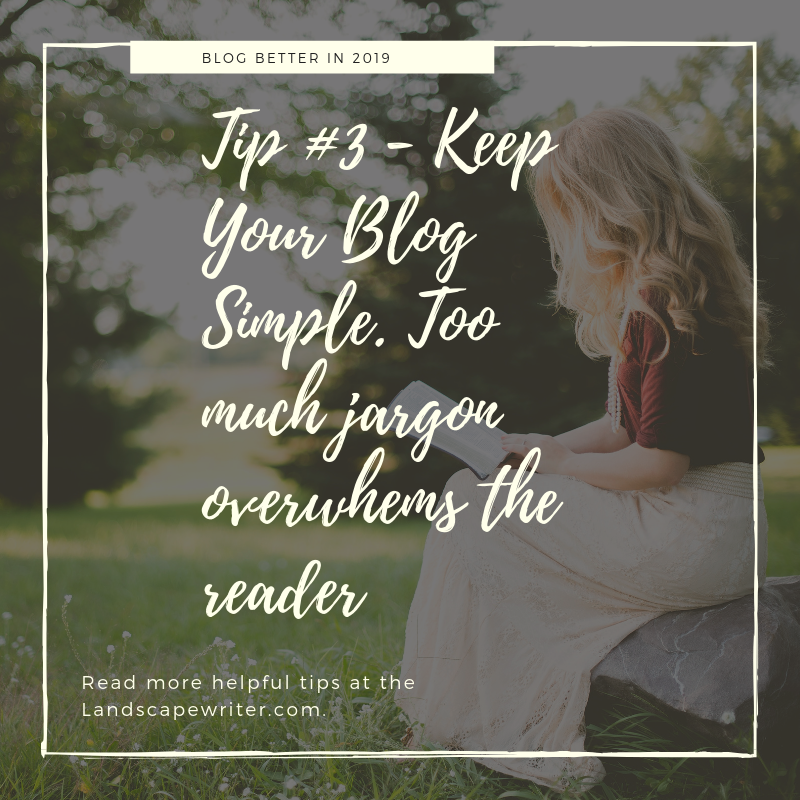
Need help with your 2019 blog writing goals? Then, call or text me at 717-381-6719 or fill out my contact form.
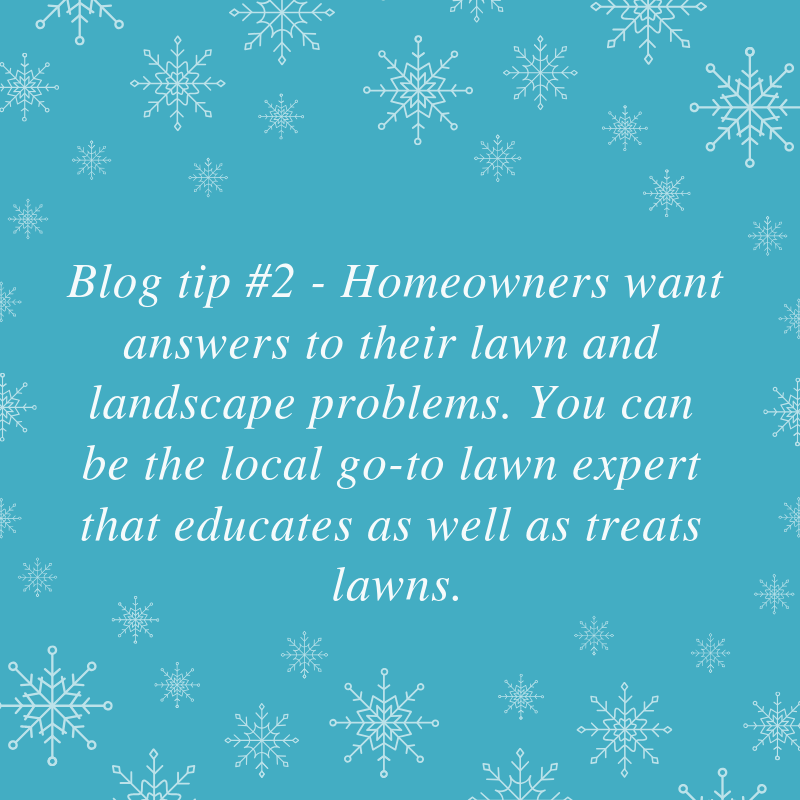
Permission marketing, created by Seth Godin, is a non-invasive method to bring more customers to your lawn service or landscaping company’s website. Its goal is to teach your prospects general information regarding their lawns, garden beds, ornamental woody plants, and hardscape features.
In your blog, you’re the expert. You teach your readers about smart lawn care habits that use
If you’re a landscaper or garden designer, you teach your clients by talking about native plants, different types of gardens and what plants grow best in your region.
If you’re a landscape contractor, your blogs can contain information on outdoor kitchens, dining areas and fire pits, just to name a few topics.
You invite people to find you by including local cities, counties, and the state you serve, so your name pops up right away on Google or Bing.
When you make it super easy for folks to find you, your prospects gradually trust you enough to go to the next step of contacting you. No cold calls, cold emails or spamming on Facebook to get more people to your website.
Instead, you trust your prospects to click on your contact page link or to pick up the phone to call you. Permission marketing can be summed up as a buyer’s rather than a seller’s market.
You can learn more about permission marketing for the lawn care and landscaping industries, by visiting my website, the Landscape Writer.
If you want to rock your landscaping or lawn care blog this year, but you don’t have time, call me today at 717-381-6719 or fill out my contact form.

A live link to help you rock your blog in 2019!
If you’re a landscaper, lawn care owner-operator, or any other business in the green industry (tree care, organic lawn care, sprinkler systems, and snow), then you want to read the Landscape Writer’s blog.
In the blogs, you’ll find helpful tips to draw more eyes to your landscape maintenance website urging new sales prospects to contact you for their landscaping and lawn care needs.
So, what are you waiting for? Start rocking your blog today.
And if you’re looking for an experienced, subject-matter-expert to create one-of-a-kind blogs just for you and your green industry blog, contact the Landscape Writer today!


